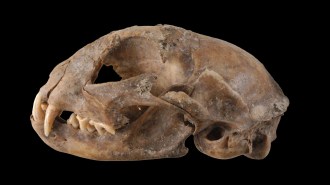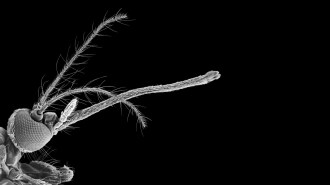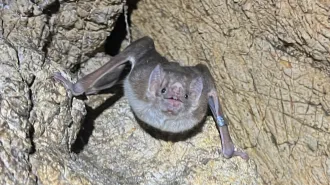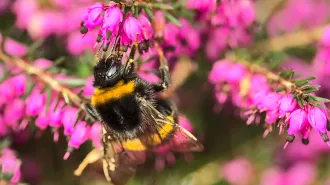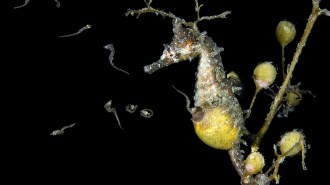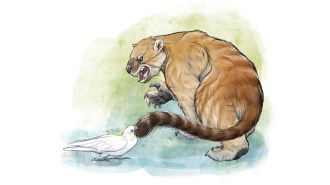What the first look at the genetics of Chernobyl’s dogs revealed
The canines are genetically distinct from dogs farther away, but radiation may not explain why
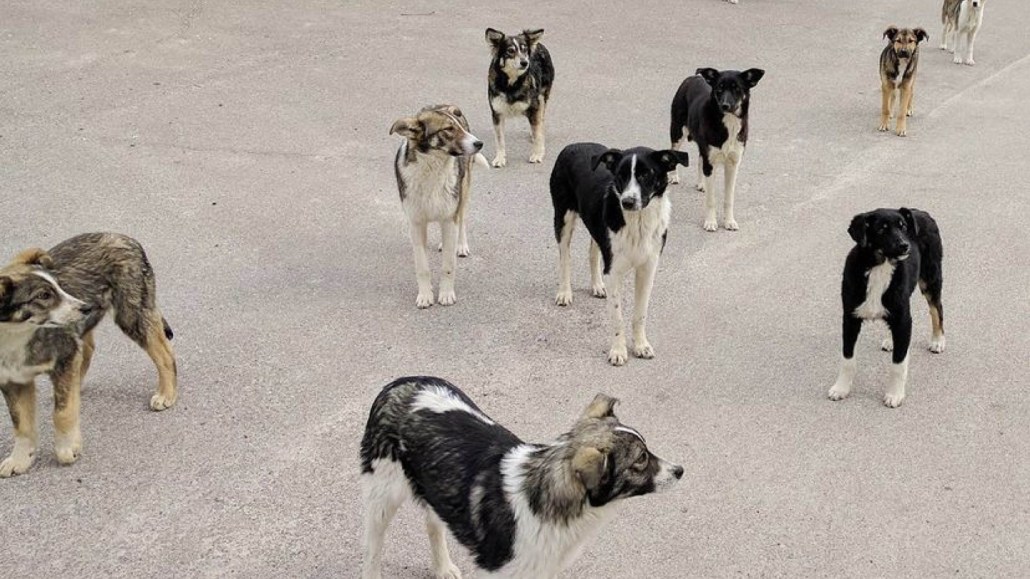
Scientists have now performed the first genetic analysis of Chernobyl’s dogs. This pack of free-roaming dogs lives within the industrial areas of the former power plant.
T. Mousseau
For generations of dogs, home is the radioactive remains of the Chernobyl Nuclear Power Plant.
In the first genetic analysis of these animals, scientists have discovered that dogs living in the power plant industrial area are genetically distinct from dogs living farther away.
Though the team could distinguish between dog populations, the researchers did not pinpoint radiation as the reason for any genetic differences. But future studies that build on the findings, reported March 3 in Science Advances, may help uncover how radioactive environments leave their mark on animal genomes.
That could have implications for other nuclear disasters and even human space travel, says Timothy Mousseau, an evolutionary ecologist at the University of South Carolina in Columbia. “We have high hopes that what we learn from these dogs … will be of use for understanding human exposures in the future,” he says.
Since his first trip in 1999, Mousseau has stopped counting how many times he’s been to Chernobyl. “I lost track after we hit about 50 visits.”
He first encountered Chernobyl’s semi-feral dogs in 2017, on a trip with the Clean Futures Fund+, an organization that provides veterinary care to the animals. Not much is known about how local dogs survived after the nuclear accident. In 1986, an explosion at one of the power plant’s reactors kicked off a disaster that lofted vast amounts of radioactive isotopes into the air. Contamination from the plant’s radioactive cloud largely settled nearby, in a region now called the Chernobyl Exclusion Zone.
Dogs have lived in the area since the disaster, fed by Chernobyl cleanup workers and tourists. Some 250 strays were living in and around the power plant, among spent fuel-processing facilities and in the shadow of the ruined reactor. Hundreds more roam farther out in the exclusion zone, an area about the size of Yosemite National Park.
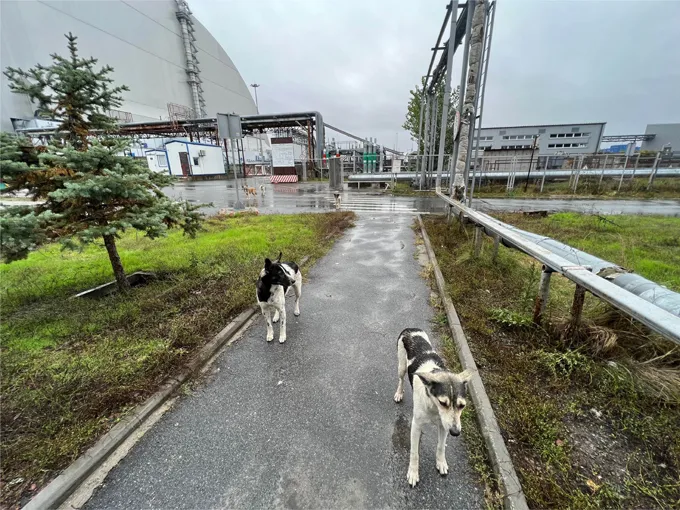
During Mousseau’s visits, his team collected blood samples from these dogs for DNA analysis, which let the researchers map out the dogs’ complex family structures. “We know who’s related to who,” says Elaine Ostrander, a geneticist at the National Human Genome Research Institute in Bethesda, Md. “We know their heritage.”
The canine packs are not just a hodgepodge of wild feral dogs, she says. “There are actually families of dogs breeding, living, existing in the power plant,” she says. “Who would have imagined?”
Dogs within the exclusion zone share ancestry with German shepherds and other shepherd breeds, like many other free-breeding dogs from Eastern Europe, the team reports. And though their work revealed that dogs in the power plant area look genetically different from dogs in Chernobyl City, about 15 kilometers away, the team does not know whether radiation caused these differences or not, Ostrander says. The dogs may be genetically distinct simply because they’re living in a relatively isolated area.
The new finding is not so surprising, says Jim Smith, an environmental scientist at the University of Portsmouth in England. He was not part of the new study but has worked in this field for decades. He’s concerned that people might assume “that the radiation has something to do with it,” he says. But “there’s no evidence of that.”
Scientists have been trying to pin down how radiation exposure at Chernobyl has affected wildlife for decades (SN: 5/2/14). “We’ve been looking at the consequences for birds and rodents and bacteria and plants,” Mousseau says. His team has found animals with elevated mutation rates, shortened life spans and early-onset cataracts.
It’s not easy to tease out the effects of low-dose radiation among other factors, Smith says. “[These studies] are so hard … there’s lots of other stuff going in the natural environment.” What’s more, animals can reap some benefits when humans leave contaminated zones, he says.
How, or if, radiation damage is piling up in dogs’ genomes is something the team is looking into now, Ostrander says. Knowing the dogs’ genetic backgrounds will make it easier to spot any radiation red flags, says Bridgett vonHoldt, an evolutionary geneticist at Princeton University, who was not involved in the work.
“I feel like it’s a cliffhanger,” she says. “I want to know more.”
